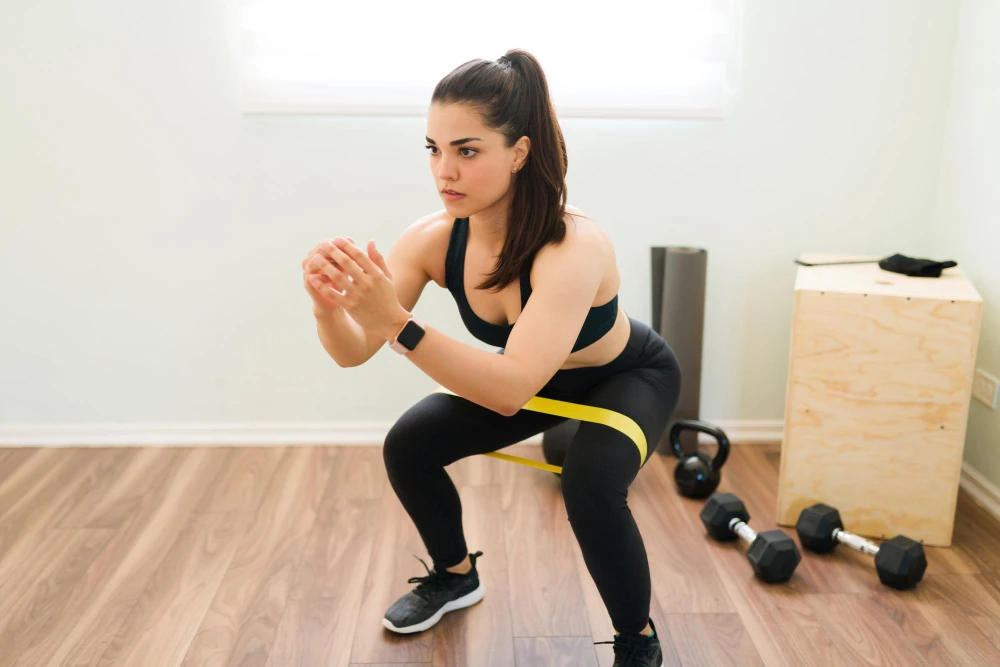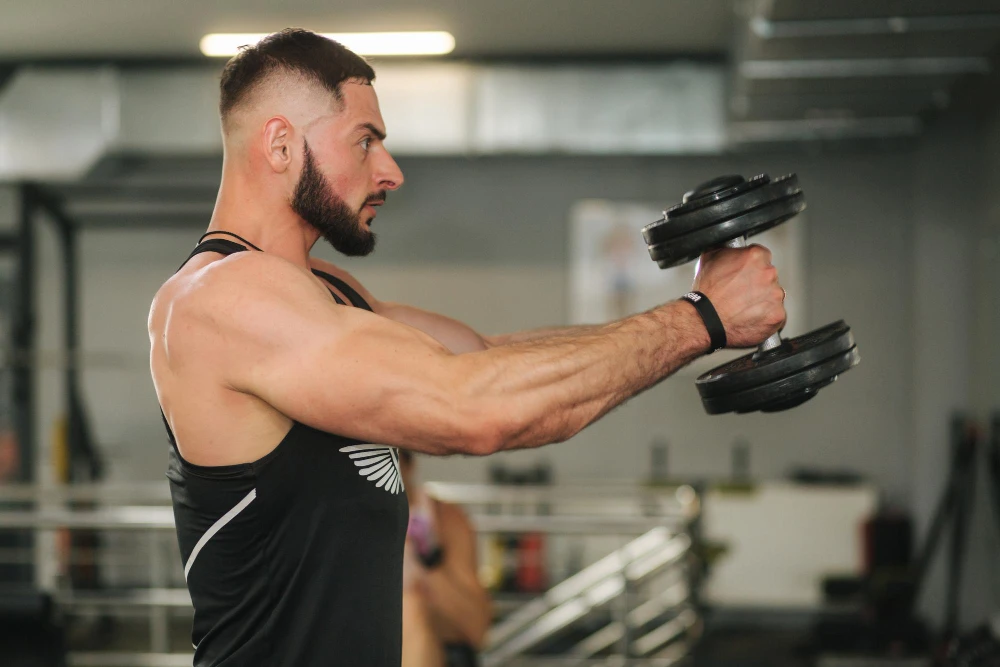Isolation exercises are an excellent way to target specific muscles and work on muscle imbalances.
In this blog, we will cover everything you need to know about isolation exercises, including how they differ from compound exercises and their benefits. We have also listed beginner-friendly isolation exercises that anyone can do, as well as those for working around injuries.
Additionally, we have included a detailed breakdown of the best isolation exercises for different muscle groups, such as quads, hamstrings, glutes, chest, back, shoulders, and arms.
So let’s dive in and learn how incorporating isolation exercises can help take your fitness game to the next level.
What are Isolation Exercises?
Isolation exercises are workouts that focus on specific muscles or muscle groups, rather than working multiple muscles simultaneously. These exercises can help to improve muscle imbalances and strengthen weaker muscles. Examples include bicep curls, tricep extensions, and calf raises, which can be done using free weights, resistance bands or weight machines. Adding isolation exercises to your workout routine can enhance overall strength and muscle definition.

How do they differ from Compound Exercises?
Isolation exercises focus on individual muscles or muscle groups, while compound exercises work multiple groups simultaneously, making them more effective for building overall strength and burning calories. A combination of both can provide a balanced workout, but it’s crucial to seek professional advice to tailor the routine to your goals and abilities.
Beginner-friendly Isolation Exercises
Isolation exercises are a great way to target specific muscle groups and improve your strength and definition. If you’re a beginner, there are a few exercises that are a good place to start.
Here are some beginner-friendly isolation exercises:
- Bicep curls: This exercise targets the biceps muscles in your upper arms. To do a bicep curl, stand with your feet shoulder-width apart and hold a dumbbell in each hand with your palms facing up. Bend your elbows and curl the weights up towards your shoulders, then slowly lower them back down.
- Tricep extensions: This exercise targets the triceps muscles in your upper arms. To do a tricep extension, sit on a bench with your feet flat on the floor and hold a dumbbell in each hand with your palms facing down. Extend your arms straight up above your head, then slowly lower the weights back down behind your head.
- Calf raises: This exercise targets the calf muscles in your lower legs. To do a calf raise, stand with your feet shoulder-width apart and your toes pointing forward. Slowly raise up onto your tiptoes, then slowly lower back down.
- Hamstring curls: This exercise targets the hamstring muscles in the back of your thighs. To do a hamstring curl, lie on your back with your knees bent and your feet flat on the floor. Hold a dumbbell in each hand with your palms facing up and place your feet on the weights. Slowly curl your heels up towards your butt, then slowly lower them back down.
- Lat pulldowns: This exercise targets the latissimus dorsi muscles (lats) in your back. To do a lat pulldown, sit in a lat pulldown machine and grasp the bar with an overhand grip. Pull the bar down until it touches your chest, then slowly raise it back up.
- Chest flyes: This exercise targets the pectoralis major muscles (pecs) in your chest. To do a chest flye, lie on a bench with your feet flat on the floor and hold a dumbbell in each hand with your palms facing each other. Slowly lower the weights out to the sides until they are at shoulder level, then slowly bring them back together in front of your chest.
These are just a few of the many isolation exercises that you can do. As you get stronger, you can increase the weight you are lifting and the number of repetitions you do. You can also add new exercises to your routine to target different muscle groups.
It is important to warm up before you start lifting weights and to cool down afterwards. You should also consult with a doctor or certified personal trainer before starting any new exercise program.
Intermediate Isolation Exercises
Here are some intermediate isolation exercises that you can try:
- Bicep curls: This exercise targets the biceps muscles in your upper arms. To do a bicep curl, stand with your feet shoulder-width apart and hold a dumbbell in each hand with your palms facing up. Slowly curl the dumbbells up towards your shoulders, keeping your elbows close to your sides. Then, slowly lower the dumbbells back down to the starting position.
- Triceps extensions: This exercise targets the triceps muscles in your backs of your upper arms. To do a triceps extension, sit on a bench with your feet flat on the floor and hold a dumbbell in each hand with your palms facing down. Slowly extend the dumbbells upwards, keeping your elbows locked in place. Then, slowly lower the dumbbells back down to the starting position.
- Lateral raises: This exercise targets the deltoids muscles in your shoulders. To do a lateral raise, stand with your feet shoulder-width apart and hold a dumbbell in each hand with your palms facing down. Slowly raise the dumbbells up to the sides of your head, keeping your elbows slightly bent. Then, slowly lower the dumbbells back down to the starting position.
- Calf raises: This exercise targets the gastrocnemius and soleus muscles in your calves. To do a calf raise, stand with your feet shoulder-width apart and your toes pointing forward. Slowly raise up onto your toes as high as you can, keeping your heels on the ground. Then, slowly lower back down to the starting position.
- Hamstring curls: This exercise targets the hamstring muscles in the back of your thighs. To do a hamstring curl, sit on a hamstring curl machine and adjust the seat so that your knees are bent at a 90-degree angle. Place your feet in the footrests and grasp the handles. Slowly curl the weight up towards your hips, keeping your knees bent. Then, slowly lower the weight back down to the starting position.

Advance Level Isolation Exercises
Here are some advanced level isolation exercises that you can add to your workout routine:
- Single-arm dumbbell row: This exercise targets the back muscles, specifically the latissimus dorsi and rhomboids. To do this exercise, stand with your feet shoulder-width apart and hold a dumbbell in each hand. Bend at the waist and row one dumbbell up to your chest, keeping your back straight. Repeat on the other side.
- Triceps pushdown: This exercise targets the triceps, the muscles on the back of the upper arm. To do this exercise, attach a rope attachment to a cable machine. Grab the rope with both hands, palms facing down. Lower the weight down until your elbows are bent at a 90-degree angle. Then, push the weight back up to the starting position.
- Hammer curl: This exercise targets the biceps, the muscles on the front of the upper arm. To do this exercise, hold a dumbbell in each hand with your palms facing each other. Curl the weights up towards your shoulders, keeping your elbows close to your sides. Then, lower the weights back to the starting position.
- Single-leg calf raise: This exercise targets the calves, the muscles on the back of the lower leg. To do this exercise, stand on one leg and place your other foot behind you on a bench or other elevated surface. Slowly raise up onto your toes, keeping your back straight. Hold for a few seconds, then lower back down. Repeat on the other side.
These are just a few examples of advanced level isolation exercises. If you are looking to build muscle and strength, these exercises can help you reach your goals. However, it is important to note that these exercises should only be performed after you have mastered the basic exercises. If you are new to working out, it is important to start with the basics and gradually work your way up to more advanced exercises.
Here are some tips for performing isolation exercises safely and effectively:
- Warm up before you start exercising.
- Use a weight that is challenging but not too heavy.
- Focus on proper form.
- Don’t overtrain.
- Listen to your body and take breaks when needed.
With proper form and technique, isolation exercises can help you build muscle and strength, and improve your overall fitness.
Let’s Sum Up
Isolation exercises can be an excellent way to incorporate variety and target specific muscle groups in your routine. They can help you fix muscle imbalances, work around injuries, and even increase your overall strength. By focusing on individual muscles, you can build a stronger foundation for compound lifts as well. Whether you’re looking to tone up or bulk up, there’s an isolation exercise out there for you.



